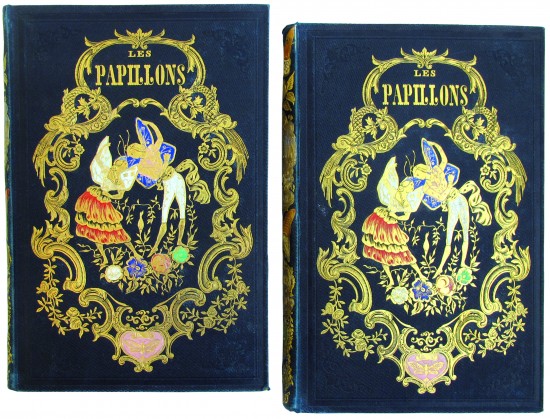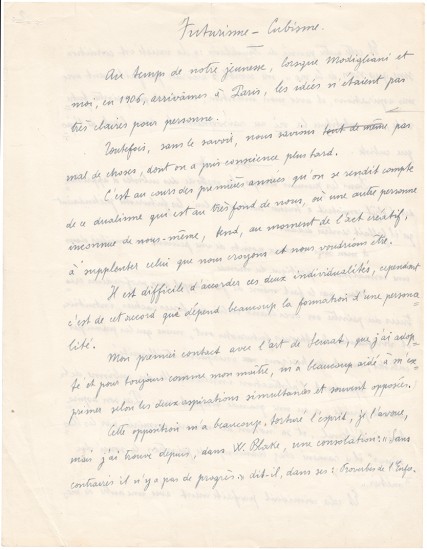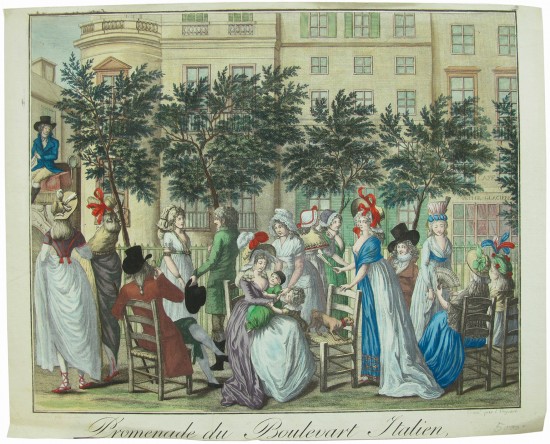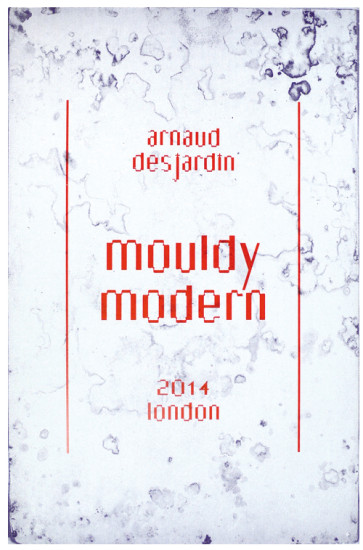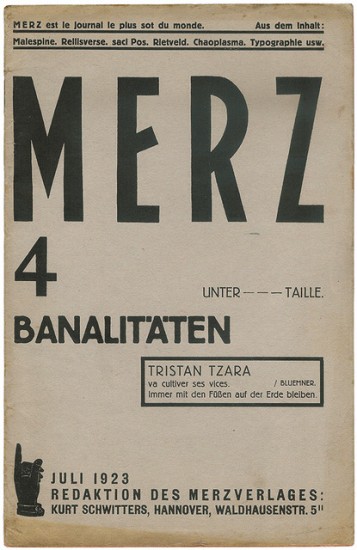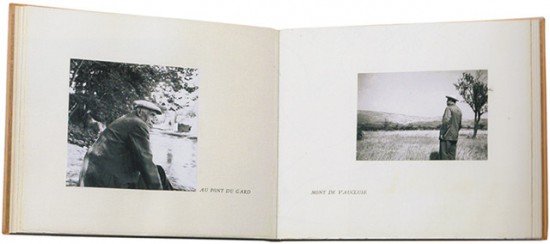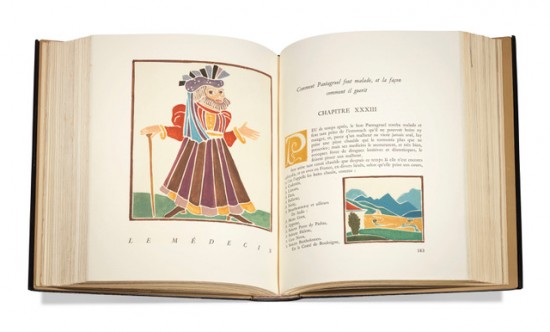L’Humidité. Nos. 1 - 25. [All Published]
Humidité, L'. Jean-François Bory, Janusz Chodorowicz, Georges Unglik & Leonardo Numez
Arnhem / Tarente / Paris. 1970–1978
Sold
Complete set of this international periodical devoted primarily to concrete poetry.
Founded in 1970 by the poet Jean-François Bory, the magazine L’Humidité alternates between thematic and monographic issues: n°2 Spécial manifestes futuristes; n°3 Le corps dans l’espace; n°4 Ben; n°5 Manfred Mohr; n°6 Italie dernière mesure; n°7 Art par correspondance, Biennale 1971; n°8 revue italienne en langue française; n°9 Italie été 72; n°10 Agullo; n°11 Journiac; n°12 Silbermann; n°13 Bertini; n°14/15 Littératures; n°16 A. F. Delmarle peintre futuriste; n°17 Nave; n°18 Bory; n°19 Plessi; n°21 Hervé Fischer; n°22 Spécial Arman; n°23 Arts plastiques littératures, notes; n°24 Encore/La création féminine; n°25 La bibliothèque; n°26 Poeti visivi.
But this rather traditional magazine structure summary is shaken by the printed layout: huge collage-montages of manifestos, letters and words of artists, event announcements, interviews, photos, notes, quotes, and drawings.
L’Humidité bears witness to the intersection of the important artistic movements and practices of its time: concrete and visual poetry with Kitasono Katué, Seiichi Niikuni, Syoji Yoshizawa, Shosochiro Takahashi for Japan, Jean-François Bory, Alain Arias-Misson, Paul de Vreefor France; sound poetry (Arthur Petronio, Henri Chopin, Bernard Heidsieck), Czech poetry of Jiri Kolar; body art (Orlan, Gina Pane, Michel Journiac), Fluxus (Ben Vautier) Support-Surface (Claude Viallat), Nouveau réalisme (Arman). The contemporary theatre also has a place in the magazine with the Italian Alberto Griffi, Argentina's Leopoldo Malher and the Pole Mieczyslaw Berman.
Within this dialogue, the Italians dominate: calling itself a revue italienne en langue française from issue No. 8, L’Humidité shifts its emphasis to Italy and the expressions as Mec'art (founded by Gianni Bertini in 1963) and the country's visual poetry. Hence the strong presence of voices like those of Eugenio Miccini, Sarenco, Lamberto Pignotti, Luciano Ori, Giulia Niccolai, Lucia Marcucci, and Carlo Alberto Sitta. Many are also musicians and artists like Giuseppe Chiari, Franco Vaccari, Claudio Parmiggiani, Maurizio Perfetti, Maurizio Nannuci or Michelle Perfetti.
If L’Humidité followed art movements and trends which originated in the 1950s and 60s, it also documented the nascent movements at the time of publication: mail art (which it devotes a whole issue), digital art (with Manfred Mohr and Jacques Palumbo) and sociological art (Hervé Fischer, Michel Journiac, Henri Maccheroni, Thierry Agullo). Of perhaps greatest importance is the 24th issue of L’Humidité which discusses women artists and their under-representation in the art world, and the heterogeneity of positions on feminist art. It rediscovers Natalia L. L, studies Ruth Francken's photométalliques reliefs and drawings, analyses Mary Beth Edelson, an American visual artist who clearly distinguishes feminist art and art made by women to project the feminine question about mythology and Jungian symbolic; Irene Schwartz and her work on the aesthetics of everyday life by disassembly and reassembly of Le Monde; Colette Deblé and composition of a plastic visual essay on the various representations of women in the history of art; and Niki de Saint Phalle.
Several of the numbers are present in their deluxe issue: No. 23 - one of 15 numbered copies with an original signed print by Michel Balducchi; No.24 - one of 15 numbered copies with an original signed lithograph by Irene Schwartz; No.25 - one of only 2 copies with an original drawing on sandpaper by Jean-François Bory, signed on verso (numbered 1/7 because the original plan was to issue 7 deluxe examples, however this was reduced to 2 by Bory); No.12 is signed and numbered by the artist Jean-Claude Silbermann (edition of 30), however it lacks the signed lithograph.
[Le Fonds Paul Destribats, 760 & 953; Gwen Allen, p. 265].
Founded in 1970 by the poet Jean-François Bory, the magazine L’Humidité alternates between thematic and monographic issues: n°2 Spécial manifestes futuristes; n°3 Le corps dans l’espace; n°4 Ben; n°5 Manfred Mohr; n°6 Italie dernière mesure; n°7 Art par correspondance, Biennale 1971; n°8 revue italienne en langue française; n°9 Italie été 72; n°10 Agullo; n°11 Journiac; n°12 Silbermann; n°13 Bertini; n°14/15 Littératures; n°16 A. F. Delmarle peintre futuriste; n°17 Nave; n°18 Bory; n°19 Plessi; n°21 Hervé Fischer; n°22 Spécial Arman; n°23 Arts plastiques littératures, notes; n°24 Encore/La création féminine; n°25 La bibliothèque; n°26 Poeti visivi.
But this rather traditional magazine structure summary is shaken by the printed layout: huge collage-montages of manifestos, letters and words of artists, event announcements, interviews, photos, notes, quotes, and drawings.
L’Humidité bears witness to the intersection of the important artistic movements and practices of its time: concrete and visual poetry with Kitasono Katué, Seiichi Niikuni, Syoji Yoshizawa, Shosochiro Takahashi for Japan, Jean-François Bory, Alain Arias-Misson, Paul de Vreefor France; sound poetry (Arthur Petronio, Henri Chopin, Bernard Heidsieck), Czech poetry of Jiri Kolar; body art (Orlan, Gina Pane, Michel Journiac), Fluxus (Ben Vautier) Support-Surface (Claude Viallat), Nouveau réalisme (Arman). The contemporary theatre also has a place in the magazine with the Italian Alberto Griffi, Argentina's Leopoldo Malher and the Pole Mieczyslaw Berman.
Within this dialogue, the Italians dominate: calling itself a revue italienne en langue française from issue No. 8, L’Humidité shifts its emphasis to Italy and the expressions as Mec'art (founded by Gianni Bertini in 1963) and the country's visual poetry. Hence the strong presence of voices like those of Eugenio Miccini, Sarenco, Lamberto Pignotti, Luciano Ori, Giulia Niccolai, Lucia Marcucci, and Carlo Alberto Sitta. Many are also musicians and artists like Giuseppe Chiari, Franco Vaccari, Claudio Parmiggiani, Maurizio Perfetti, Maurizio Nannuci or Michelle Perfetti.
If L’Humidité followed art movements and trends which originated in the 1950s and 60s, it also documented the nascent movements at the time of publication: mail art (which it devotes a whole issue), digital art (with Manfred Mohr and Jacques Palumbo) and sociological art (Hervé Fischer, Michel Journiac, Henri Maccheroni, Thierry Agullo). Of perhaps greatest importance is the 24th issue of L’Humidité which discusses women artists and their under-representation in the art world, and the heterogeneity of positions on feminist art. It rediscovers Natalia L. L, studies Ruth Francken's photométalliques reliefs and drawings, analyses Mary Beth Edelson, an American visual artist who clearly distinguishes feminist art and art made by women to project the feminine question about mythology and Jungian symbolic; Irene Schwartz and her work on the aesthetics of everyday life by disassembly and reassembly of Le Monde; Colette Deblé and composition of a plastic visual essay on the various representations of women in the history of art; and Niki de Saint Phalle.
Several of the numbers are present in their deluxe issue: No. 23 - one of 15 numbered copies with an original signed print by Michel Balducchi; No.24 - one of 15 numbered copies with an original signed lithograph by Irene Schwartz; No.25 - one of only 2 copies with an original drawing on sandpaper by Jean-François Bory, signed on verso (numbered 1/7 because the original plan was to issue 7 deluxe examples, however this was reduced to 2 by Bory); No.12 is signed and numbered by the artist Jean-Claude Silbermann (edition of 30), however it lacks the signed lithograph.
[Le Fonds Paul Destribats, 760 & 953; Gwen Allen, p. 265].
4to. 25 issues in 24 volumes (double number 14/15). Black and white illustrations. Complete with the two inserts in issue 8 (Bernard Heidsieck floppy disc & Ben Vautier envelope, contents different in each copy) and the signed lithograph insert by Herve Fischer in no.21. Publisher's wrappers, stapled.
#45604

